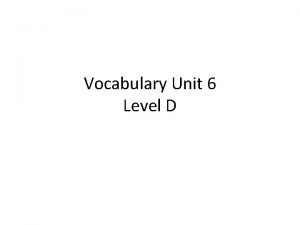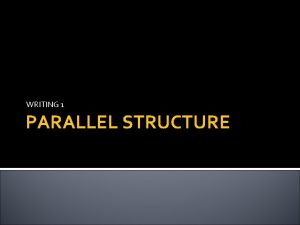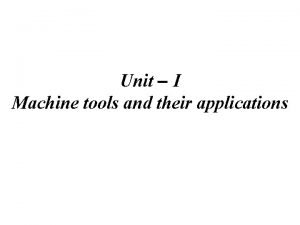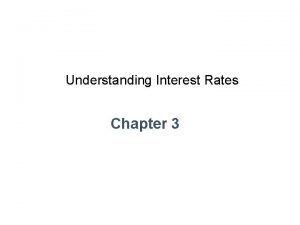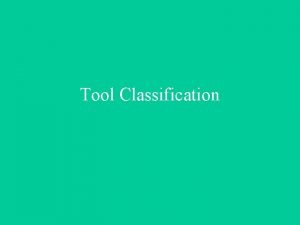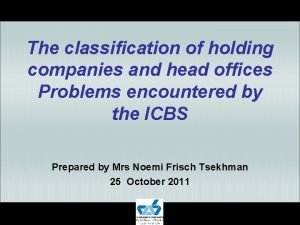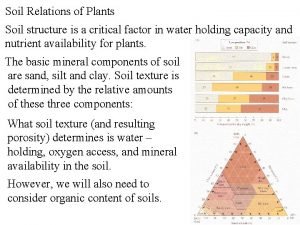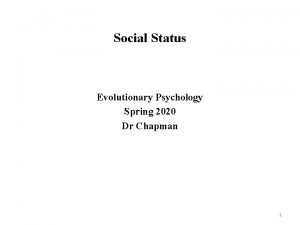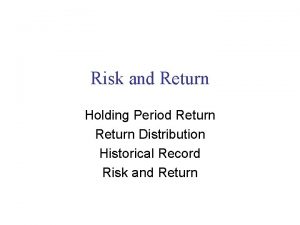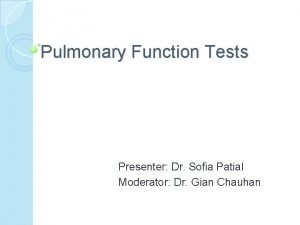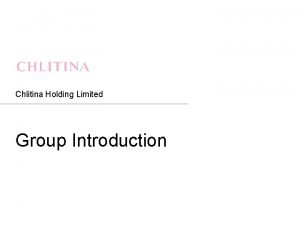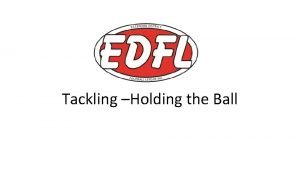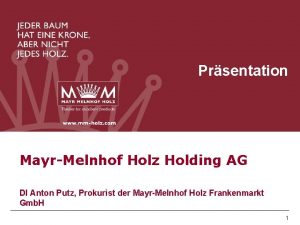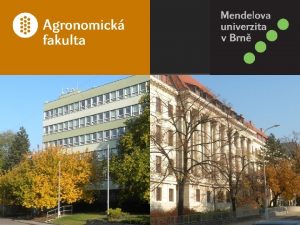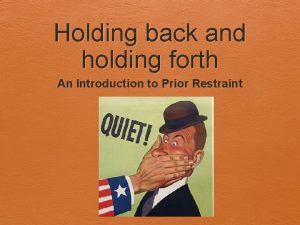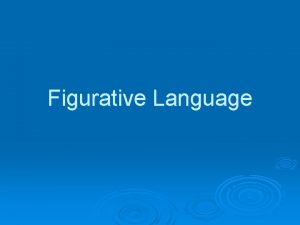What is language Teaching Teaching is holding the


























































- Slides: 58

What is language ?

Teaching !!! • Teaching is holding the hand of a young learner and saying it's going to be OK. • Teaching is being careful that you acknowledge every student every day. • Teaching is never forgetting that for a moment each day you might be the only person who touches someone's life. • Teaching is pushing both yourself and the students those last few weeks of school. • Teaching is worrying that you don't know about the subject deeply to make it easily accessible to everyone. • Teaching is correcting papers when your family is relaxing watching TV or out in the yard. • Teaching involves the giving of oneself to others so that possibly, just possibly, the piece that one gives will blossom in the heart of another and, even more importantly, might cause others unknown to you to blossom.

Teaching !!! • The more you know about your students, … the less effort you make, … the quicker they understand, … & more importantly, the more loveable you become.

Learning Styles OR Multiple Intelligence

What are these Learning Styles? • Visual • Auditory • Kinaesthetic

What is Intelligence? The question isn’t “How intelligent is the learner” learner … but “In what way is the learner intelligent” intelligent We are all smart! We are smart in different ways! One way is not better than another.

Multiple Intelligences

• • Verbal/Linguistic - "Word Smart" Logical/Mathematical - "Math Smart" Musical/Rhythmic - "Music Smart" Bodily/Kinaesthetic - "Body Smart" Visual/Spatial - "Art Smart" Interpersonal - "People Smart" Intrapersonal - "Self Smart" Naturalist - "Nature Smart"

What is language ?

What’s Language? q Language is commonly defined (simply) as “a means of communication”; ü but if it is defined so, there will be no difference between human communication and animal communication. ü The reason is because, both animal and human do have means to communicate.

What’s Language? ü To be more scientific, scientific a language can be defined as: “An arbitrary system of creative vocal symbols used as a means of communication among human beings”.

What’s Language? q Let us see what is meant by arbitrary system, system vocal symbol, symbol creative, creative and means of communication as the characteristics or properties of human language.

A. Language is Arbitrary !!!! • A language is arbitrary because the relationship between a vocal symbol (in form, in the sense of linguistics) and the entity, state, event, or action (meaning) of the vocal symbol cannot be proved logically

A. Language is Arbitrary !!!! For example, the question of: “why the following entity is called “birds” in English” and not “monkey “ or “money” for instance, cannot be answered!

B. Language is Vocal Symbols!!!! • Considering a language as a construction of vocal symbols, symbols we actually want to distinguish oral from written language. A language is originally oral/ spoken (vocal symbols) In other words, we can say that spoken language is the origin of a language.

B. Language is Vocal Symbols!!!! • See this fact!!! Children grow up learning and speaking a language (orally) orally before learning to write. Even in this modern age, some people still cannot write but they can communicate with a language.

C. Language is Creative !!!! • No matter how well a dictionary of a language is designed and written, it will never contain all possible sentences that a human being (the speaker of a language) can make and use for communication.

C. Language is Creative !!!! • Once we speak a language (say, our mother tongue/ native language), the components and rules of the language enables us to create infinite number/ unlimited numbers of sentences. It enables us to put words together to make phrases, put phrases together to make sentences, and so forth.

The Scope of Study of Language Micro-linguistics

The Scope of Study of Language Macro- linguistics Applied Several other fields Linguistics language education Computer sciences Computation al -linguistics mind society culture brain Ethnic groups Psycholinguistics Neurolinguistics Ethnolinguistics Anthropolinguistics

Socio-linguistics & Dialectology • • • Socio-linguistics Definition Sociolinguistics Vs Sociology of language Languages, Dialects, Standards Dialects Vs Accents Fields of Sociolinguistic Studies: ü Language Varieties ü Language Contact (Pidgin Vs Creole) ü Language Maintainance / Language Change ü Language Planning

Socio-linguistics & Dialectology • Definition (Sociolinguistics) v Branch of Linguistics. v « Science concerned with the relationship between Language and society » v. It considers language as a social and cultural phenomenon v It studies language in its social contexts (real life situations) through emperical investigation

o-linguistics & Dialectology io-linguistics • Sociolinguistics & Sociology of Language v Sociolinguistics: « Its main focus is: society on language» language e. g. AAVE (African American Vernucular English): the use of: « He don’t know nothing » & « He doesn’t know anything » depending on social variables such as: race, education , social class… --------------------------------------------------v Sociology of Language: « Its main focus is: language effects on society» society e. g. the sexist theory ( chairman, chairman chairwoman…) chairwoman - language is like a pair of glasses through which we see everything.

Socio-linguistics & Dialectology • Fields of Socioliguistic Studies A. Language Varieties: 1) The Standard Variety : It’s actually an idealized variety that has no specific region. It’s used by government, media, and taught at schools and universities. e. g. MSA (Modern Standard Arabic)/ Standard British English for TEFL & TESOL contexts. 2) Regional (Geographical) Dialect: A variety of language spoken by people living in a particular area. e. g. The north American people use the sentence “My hair needs combing” combing but it becomes “My hair needs to be combed” combed in the mid- north, and “My hair needs combed” combed in the south.

Socio-linguistics & Dialectology • 3) Fields of Socioliguistic Studies Social Dialect (Sociolect): forms of a language that characterize the speech of different social classes. It is used for a recognizable form of urban language • e. g. there are quite differences in Indian languages between the speech of Brahmins and non. Brahmins castes The Brahmin word to say ‘milk’ is haalu, while the non-brahmin says aalu. 4) Register (Functionalf Dialect): a term widely used in sociolinguistics to refer to “varieties according to use” • Use to describe specific vocabulary associated with different occupational group. • e. g. language of doctors, engineers, journals, legalese, etc.

Accent Vs Dialect Fields of Linguistic Study Dialect Accent A. Language Varieties: - Whether we think we speak a standard variety of a given language, we all speak with an ACCENT be it remarkable or less noticeable. - The term « accent » is restricted to the description of aspects of pronunciation that identify where the speaker is from (regionally or socially) - DIALECT, on the other hand, overwhelms the features of grammar and vocabulry as well as aspects of pronunciation.

Socio-linguistics & Dialectology B. Language Change • The varieties of language examined by sociolinguists are usually urban and in particular take account of the factors class, age and sex. The central element in a sociolinguist study is the linguistic variable — some item of language (phonological, morphological, syntactic or semantic) — which is suspected of varying systematically in correlation with the factors such mentioned.

Socio-linguistics & Dialectology C. Language Contact

Socio-linguistics & Dialectology D. Language Maintainance

Socio-linguistics & Dialectology E. Language Planning

Socio-linguistics & Dialectology • Definition • Dialect Vs Language




Teaching !!! • Teaching is holding the hand of a young learner and saying it's going to be OK. • Teaching is being careful that you acknowledge every student every day. • Teaching is never forgetting that for a moment each day you might be the only person who touches someone's life. • Teaching is pushing both yourself and the students those last few weeks of school. • Teaching is worrying that you don't know about the subject deeply to make it easily accessible to everyone. • Teaching is correcting papers when your family is relaxing watching TV or out in the yard. • Teaching involves the giving of oneself to others so that possibly, just possibly, the piece that one gives will blossom in the heart of another and, even more importantly, might cause others unknown to you to blossom.

Approach – Method – Technique Approach (theory) Method (plan) q A set of: principles, beliefs, q A systematic way of doing assumptions, or ideas something. It implies a about the nature of logical arrangement of learning. steps It is procedural. q Purpose: Purpose describing the Purpose accomplishing nature of language & the linguistic objectives. nature of language learning WHY? HOW? Technique (procedure) q It’s a well-defined procedure to accomplish a particular classroom task or activity q Purpose: Purpose reaching pedagogical goals. WHAT?

Approaches & Methods to Teaching • Grammar Translation Method (Classical Method) • Direct Method (Natural Method) • Aural-oral Method (Audio-lingual Method) • Situational Approach • Communicative Approach (CLT) • Competency-Based Approach (CBA)

Grammar Translation Method Built on the basis of : Structuralism • Some Principles : 1. 2. 3. 4. 5. Detailed analysis of grammar rules to understand manipulate morphology and syntax of the target language. ( it’s rule-governed) L 1 is maintained as a reference in the acquisition of the second language. Reading and writing are primary skills to be enhanced. Grammar is taught deductively in an organised and systematic way. Students are taught to translate from and into the foreign

Grammar Translation Method • Techniques: 1. 2. 3. 4. 5. 6. 7. 8. Translation of literary passages. Reading comprehension questions. Focus on lexis (synonyms/antonyms/definitions. . ) Deductive application of rules. Fill in blanks, charts, tables. . Memorization Use words in sentences. Composition.

Grammar Translation Method • shortcomings : 1. 2. 3. 4. 5. 6. 7. This approach was not based on any explicit psycholinguistic or sociolinguistic theory. No focus on how learners learn the language or how to use it. Its main concern is purely linguistic. Practical mastery of language or actual use of it is totally ignored. Learners are completely passive. Learners are asked to produce perfect translations of literary extracts. Much emphasis on the form rather than the meaning. As the classroom technique consists of giving definitions, rules, explanations , memorisation, the time necessary for practicing the

Role of the teacher • The authority in the classroom. • The only source of knowledge. Role of the learner • Passive receiver of instruction. • Machine-like performer.

Direct Method (Natural Method) Built on the basis of : Communicative v The purpose of learning a foreign language is that students learn how to communicate by learning to think in the target language. • • It was developed in order to overcome the shortcomings of GTM. This method became popular during the early years of the 20 th century. It’s called « Direct » because the teaching of the FL was done without any resort of the mother tongue. It’s based on the assumption that one should learn a foreign language as one would learn one’s mother tongue.

Direct Method (Natural Method) Also called : Naturalistic v Approach Advocated by a German Linguist (Maximillian Berlitz). The idea of teaching language without translation. v The experience of the French scholar (Lge teacher); Gouin. “ “Language learning is a matter of transforming perceptions into conceptions. Children use language to represent their conceptions”. Gouin’s PLLT, chapter 2.

Direct Method (Natural Method) Built on the basis of : Communicative 1. 2. 3. 4. 5. 6. 7. Classroom language is conducted in the target language ( no use of the mother tongue). Grammar is taught inductively (explicit grammar rule is never given). Concrete vocabulary is taught through objects (realia/pictures) dramatization and demonstration. Abstract vocabulary is taught by association of ideas. Speaking and listening skills are emphasized. Correct pronunciation is of great importance. Reading and writing in the target language should be taught from the beginning of language instruction and it must be developed through practice with speaking.

Direct Method (Natural Method) Built on the basis of : Communicative 8. Classroom language is conducted in the target language ( no use of the mother tongue). 9. Language is primarily spoken. 10. Students should learn to think in the target language as the soon as possible by knowing how to ask questions and answer them. 11. Self-correction facilitates language learning. 12. Lessons should contain some conversational activity for students to use language in real contexts. 13. The syllabus is designed by on situations or topics. 14. Students should be encouraged to speak as much as possible. 15. Learning another language involves learning how speakers of that language live.

Direct Method (Natural Method) • Techniques: 1. 2. 3. 4. 5. 6. 7. 8. Reading aloud. Question and answer exercise. Getting students to self-correct. Conversation practice. Fill-in-the-blank exercise (no explicit grammar rule applied). Dictation. Map drawing. The teacher is the primary source of comprehensible input.

Direct Method (Natural Method) Also called : Naturalistic Approach v The approach advocates the implementation of nativespeaking teachers in language classrooms where they provide authentic and spontaneous use of language. v However, though the DM gained noticeable poplarity in private schools, it failed in public schools, v It depended thoroughly on the teacher’s skills.

Direct Method (Natural Method) Shortcomings v All language activities are related to the classroom context, and not to real life situations. Therefore, learners are not using the FL for communicative purposes. v Time consuming: consuming too hard to explain meanings through pointing at objects and dramatizing (hard to explain abstract concepts). v It requires a highly competent teachers who are very fluent in the foreign language. v It lacks solid theoretical foundations.

Role of the teacher Role of the learner • Direct the class activities. • Primary source of comprehension input. • Should be fluent to provide authenticity of language. • Processor of comprehensible input of the target language. • Create a friendly & an interesting classroom atmosphere of learning.

Audio-Lingual Method (Aural-oral Method) Built on the basis of : Structuralism (Behaviourism) v The objective of learning a foreign language is that students learn how to use the target language for communicative purposes. REPEAT AFTER ME

Audio-Lingual Method (Aural-oral Method) q Emergence of the Approach… • ALM was developed in USA during second world war (2 nd WW). • At that time, there was a crying need for people to learn foreign language rapidly for military purposes • • World War II had a significant effects on language teaching in US. • The U. S government established a special language training program called Army Specialized Training Program (ASTP) 1942.

Audio-Lingual Method(Aural-oral Method) Some Principles : v The combination of: Structural Linguistics theory, theory Contrastive Analysis, Analysis Aural-oral Procedures, Procedures and Behaviourist psychology 1. Language forms occur most naturally within a context. 2. A contrastive analysis between the students’ native language and the target language will reveal where a teacher should expect the interference. 3. Foreign language learning is basically a process of mechanical habit formation. 4. It is important to prevent learners from making errors (errors lead to bad formation of habits). When they occur they should be immediately corrected by the teacher.

Audio-Lingual Method Built on the basis of : Structuralism 5. 6. 7. 8. 9. The purpose of FL learning is to learn how to use language to communicate. Language is primarily spoken. Positive reinforcement helps the students to develop correct habits. Students should learn to respond to verbal and non- verbal stimuli. Pattern practice helps students to form habits which enable the students to use the patterns. 10. Students should overlearn (learn to answer automatically without stopping to think). 11. The major objective of language teaching should be for students to acquire the structural patterns; then vocabulary.

Audio-Lingual Method Built on the basis of : Structuralism 12. The learning of a foreign language should be the same as the acquisition of the native language. 13. The rules necessary to use the target language will be figured out or induced from examples. 14. The major challenge of foreign language teaching is getting students to overcome the habits of their native language (a comparison between the native and the target language will tell the teacher in what areas her students will probably experience difficulty “contrastive analysis”). analysis 15. Speaking is more basic to language than the written form. 16. The natural order of skill acquisition is: listening, speaking, reading, and writing.

Audio-Lingual Method Techniques … v Dialogue memorization. (Students memorize an opening dialogue using mimicry and applied role-playing) v Backward build-up (expansion) drill. (Teacher breaks a line into several parts, students repeat each part starting at the end of the sentence and "expanding" backwards through the sentence, adding each part in sequence) v Repetition drill. (Students repeat teacher's model as quickly and accurately as possible) v Single-slot substitution drill. (Teacher states a line from the dialog, then uses a word or a phrase as a "cue" that students, when repeating the line, must substitute into the sentence in the correct place) v Multiple-slot substitution drill. (multiple words)

Audio-Lingual Method q Other Techniques v Transformation drill. (Teacher provides a sentence that must be turned into something else, for example a question to be turned into a statement, an active sentence to be turned into a negative statement, etc) v Question-and-answer drill. v Use of minimal pairs. v Dialogue completeion. v Grammar game.

Role of the teacher • Guide & behaviour controller. • Model of the target language. • Orchestra Leader. Role of the learner • Imitator.

Declining the Method Ø Criticism … v Theoretical foundations unsound in terms of language and learning theories. v No practical results. v Teachers should be monolingual; bilingualism is discouraged in ALM. v Complete negligence of creative use of language and cognition.
 Atone antonym
Atone antonym Hát kết hợp bộ gõ cơ thể
Hát kết hợp bộ gõ cơ thể Frameset trong html5
Frameset trong html5 Bổ thể
Bổ thể Tỉ lệ cơ thể trẻ em
Tỉ lệ cơ thể trẻ em Voi kéo gỗ như thế nào
Voi kéo gỗ như thế nào Tư thế worms-breton
Tư thế worms-breton Chúa sống lại
Chúa sống lại Môn thể thao bắt đầu bằng chữ f
Môn thể thao bắt đầu bằng chữ f Thế nào là hệ số cao nhất
Thế nào là hệ số cao nhất Các châu lục và đại dương trên thế giới
Các châu lục và đại dương trên thế giới Công thức tính thế năng
Công thức tính thế năng Trời xanh đây là của chúng ta thể thơ
Trời xanh đây là của chúng ta thể thơ Cách giải mật thư tọa độ
Cách giải mật thư tọa độ 101012 bằng
101012 bằng độ dài liên kết
độ dài liên kết Các châu lục và đại dương trên thế giới
Các châu lục và đại dương trên thế giới Thơ thất ngôn tứ tuyệt đường luật
Thơ thất ngôn tứ tuyệt đường luật Quá trình desamine hóa có thể tạo ra
Quá trình desamine hóa có thể tạo ra Một số thể thơ truyền thống
Một số thể thơ truyền thống Cái miệng nó xinh thế chỉ nói điều hay thôi
Cái miệng nó xinh thế chỉ nói điều hay thôi Vẽ hình chiếu vuông góc của vật thể sau
Vẽ hình chiếu vuông góc của vật thể sau Biện pháp chống mỏi cơ
Biện pháp chống mỏi cơ đặc điểm cơ thể của người tối cổ
đặc điểm cơ thể của người tối cổ V. c c
V. c c Vẽ hình chiếu đứng bằng cạnh của vật thể
Vẽ hình chiếu đứng bằng cạnh của vật thể Phối cảnh
Phối cảnh Thẻ vin
Thẻ vin đại từ thay thế
đại từ thay thế điện thế nghỉ
điện thế nghỉ Tư thế ngồi viết
Tư thế ngồi viết Diễn thế sinh thái là
Diễn thế sinh thái là Các loại đột biến cấu trúc nhiễm sắc thể
Các loại đột biến cấu trúc nhiễm sắc thể So nguyen to
So nguyen to Tư thế ngồi viết
Tư thế ngồi viết Lời thề hippocrates
Lời thề hippocrates Thiếu nhi thế giới liên hoan
Thiếu nhi thế giới liên hoan ưu thế lai là gì
ưu thế lai là gì Sự nuôi và dạy con của hổ
Sự nuôi và dạy con của hổ Sự nuôi và dạy con của hươu
Sự nuôi và dạy con của hươu Sơ đồ cơ thể người
Sơ đồ cơ thể người Từ ngữ thể hiện lòng nhân hậu
Từ ngữ thể hiện lòng nhân hậu Thế nào là mạng điện lắp đặt kiểu nổi
Thế nào là mạng điện lắp đặt kiểu nổi Microteaching is a scaled down teaching
Microteaching is a scaled down teaching I consider your behavior rude irresponsible and offensive
I consider your behavior rude irresponsible and offensive Drill bit parts
Drill bit parts Effective rate of interest formula
Effective rate of interest formula Classification of holding tools
Classification of holding tools What is the importance of soil
What is the importance of soil Holding company definition
Holding company definition Burlisher forceps
Burlisher forceps It is an instrument for grasping and holding
It is an instrument for grasping and holding Radiální holding
Radiální holding Available water definition
Available water definition Soil texture water holding capacity
Soil texture water holding capacity Social attention holding theory
Social attention holding theory Nominal rate of return
Nominal rate of return Uzps tracking
Uzps tracking Trendelenber
Trendelenber
